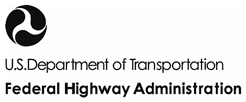Rural Data Collection
Technology
Contact Information: Operations Feedback at OperationsFeedback@dot.gov.
Printable version [PDF 6.4MB]
You may need the Adobe® Reader® to view the PDF.
Travel Time on Arterials and Rural Highways: State-of-the-Practice Synthesis on Rural Data Collection Technology
April 2013

FHWA-HOP-13-029
Notice
This document is disseminated under the sponsorship of the U.S.
Department of Transportation in the interest of information exchange.
The U.S. Government assumes no liability for use of the information
contained in this document. This report does not constitute a standard,
specification, or regulation.
The United States Government does not endorse products or
manufacturers. Trademarks or manufacturers' names appear herein only
because they are considered essential to the objective of this document.
Quality Assurance Statement
The Federal Highway Administration (FHWA) provides high quality
information to serve Government, industry, and the public in a manner
that promotes public understanding. Standards and policies are used to
ensure and maximize the quality, objectivity, utility, and integrity of its
information. FHWA periodically reviews quality issues and adjusts its
programs and processes to ensure continuous quality improvement.
Table of Contents
[ Technical Report Documentation Page ] [ Acknowledgements ] [ List of Acronyms ]
Executive Summary
1. Introduction
1.1 Background and Objectives
1.2 Methodology
1.3 Organization of Synthesis Report
2. Data Source Summaries
2.1 Bluetooth Detection
2.2 Toll Tag Reader
2.3 In-Pavement Magnetic Detectors
2.4 Automatic License Plate Readers (ALPR)
2.5 Machine Vision
2.6 Connected Vehicle
2.7 Radar, Microwave, LIDAR (RML)
2.8 Inductive Loops
2.9 Crowdsourcing
2.10 Cell Phone Signal Monitoring
3. Implementations
of Rural Travel Time Data Collection
3.1 Minnesota
DOT’s I-35 Temporary Travel Times System
3.1.1 Background and Planning
3.1.2 Implementation and Management
3.1.3 Lessons Learned
3.2 Maine DOT’s Use
of Variable Speed Limit (VSL) Signs to Provide Real-Time
Traveler Information
3.2.1 Background
and Planning
3.2.2 Implementation and Management
3.2.3 Future Considerations
3.3 Various Statewide Routes,
Wisconsin
3.4 I-45 from Houston to
Dallas, Texas
3.5 Various Routes in Oregon,
Frontier Travel Time Project
3.6 State Route 520 in
Orange County, FL
3.7 I-90, Snoqualmie Pass
in Washington
4. Best Practices
for Rural Travel Time Data Collection
4.1 Need Assessment, Planning, and Specifications Development
4.2 Selecting and Acquiring Data Collection Technology
4.3 Implementation, Management, and Evaluation
5. Conclusion
References
List of Figures
Figure 1. RTT Signs in Washington
State
Figure 2. TrafficCast’s
BlueTOAD Pole-mounted, Solar-powered Bluetooth Detector
and Cabinet Interior
Figure 3. Toll Tag Reader
(AVI) in Houston, TX
Figure 4. Sensys Sensor
Figure 5. Typical Sensys
Implementation Showing Sensor Array, Repeater, and
Access Point
Figure 6. ALPR Illumination
(foreground) and Camera (background) Used in a Work
Zone On Arizona State Route 68
Figure 7. Project Location
and Minnesota State Route 23
Figure 8. Travel Time Sign
Located Near 40th Avenue on I-35 in Duluth
Figure 9. Travel Time Sign
Locations and Messages on I-35
Figure 10. Maine DOT’s
511 Traveler Information Map Showing the I-95 Corridor
Figure 11. State of Maine
Variable Speed Sign
Figure 12. Examples of
Rural Freeway Travel Time Coverage in Wisconsin
Figure 13. Two Examples
of AWAM Bluetooth Sensors
Figure 14. Houston TranStar
I-45 Traffic Map
Figure 15. Orange County
Road Network
Figure 16. Typical Display
Format of OOCEA Travel Time Sign
Figure 17. Snoqualmie Pass Traffic Map
Figure 18. Travel Time Sign Approaching Snoqualmie Pass
List of Tables
Table 1. Candidate RTT Technologies
Table 2. Table of Search Terms and Categories
Table 3. Candidate RTT Technologies
U.S. Department of Transportation
Federal Highway Administration
Office of Operations
1200 New Jersey Avenue, SE
Washington, DC 20590
Toll-Free "Help Line" 866-367-7487
ops.fhwa.dot.gov
April 2013
FHWA-HOP-13-029